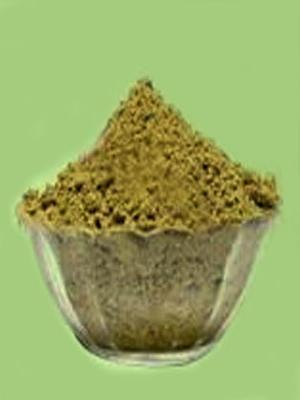Coloring of hair with henna and basma
Every woman knows that painting hair hurtstheir condition and appearance, in spite of the fact that modern manufacturers of coloring agents constantly repeat about the minimum content of harmful components. But nevertheless there are methods of staining and dyes, the use of which not only does not damage the hair, but even makes them healthy, strong and shiny - the pride of their possessor. This is the color of henna and basma - natural dyes, which are used by a large number of women in the world.
About the benefits of henna and basma
Henna is dried and ground leaves of a plantlaurison, which grows in North Africa and the Middle East. In the leaves of this shrub contains a large number of essential oils, vitamins, tannins.
Thanks to the content of essential oils, a persistent smellwhich absorb hair when staining, henna also has a relaxing effect. Tannins, which are rich in henna, normalize the sebaceous glands of the skin of the head, thereby preventing the appearance of dandruff. A complex of vitamins, including vitamins C, B and beta-carotene, nourishes the hair, making them soft, shiny and silky.
Another natural dye is basma,which is obtained from the leaves of the indigo. This plant can be found in East Asia. Basma, like henna, contains a large number of vitamins and essential oils.
Hair coloring with henna and basma has its ownadvantages, the most important of which is that they can be used during pregnancy, since they do not contain additional chemical components.
Disadvantages of staining with natural dyes
Undoubtedly, the pluses of staining with henna or basma are huge, but there are some drawbacks to this method of painting that you need to know in advance:
- henna is a very persistent color, therefore, after coloring the hair with henna, it is impossible to change their color, you should wait until the hair grows;
- hair coloring with henna and basma is long-termcharacter, since these dyes stay on the hair longer than chemical paint, about 7-8 months; but all the same it is necessary to tint the hair every 2-3 months to make the color juicy;
- intensity and color shade depends on the natural color of the hair; so, on light hair henna or basma give a very bright color, and on hair of darker shades - less bright;
- Do not recommend frequent (2 times a month or more) staining with henna or basma, as it is possible to achieve the opposite effect, the hair will become dull.
Hair color choice
Before you dye your hair, you should decide on thethe result that will be obtained after staining. The first coloring of hair with henna and basma involves a mini test: apply the dye to a thin strand of hair, wash the mixture after 30 minutes, the result will allow you to know in advance the color that will be obtained after staining.
It should be borne in mind that the intensity of the color depends on the mixture itself, as well as on the time of staining: the longer the exposure, the more intense the color.
How to get different shades by coloring your hair with natural dyes?
When dyeing hair with one henna:
- chestnut and black hair will acquire shades of red, from copper to copper-red;
- light brown hair can acquire shades from orange-red to sandy-red;
- owners of blond or gray hair can get flashy shades, from carrot to red.
Henna is used as a separate dye, in contrast to basma, which must be mixed with henna in various proportions.
Henna and basma - proportions:
- to obtain a black color, you must observe the proportion of henna: basma = 1: 3;
- dark chestnut color is obtained if you add henna to the mixture: basma = 1: 1 beet juice or red wine;
- golden-red color can be achieved if the mixture of henna: basma = 2: 1 add a decoction of chamomile.
After selecting the appropriate shade, you can proceed to prepare the mixture for staining, and then directly to the painting itself.
Rules for preparation of a mixture for coloring
The mixture is best brewed in a ceramicglassware or dishes. The powder should be mixed with hot water, the temperature of which should not exceed 80 degrees. Do not pour henna powder with boiling water, as it loses its properties.
Hair coloring with henna and basma can be carried out in two ways:
- Mix the henna powder and basmas immediately, preparing the mixture for staining;
- dye the hair with henna, and then immediately with basma, this method allows you to monitor the intensity of the color.
Henna should be applied to clean, slightlydried hair. For staining with henna, you should have gloves, a brush or a sponge, which will allow the mixture to be gently applied to the hair, bypassing skin areas, as this dye is quickly absorbed by the skin and does not rub off.
After dyeing, the hair needs to be wrappedplastic wrap and then a towel - to create the greenhouse effect, which will allow to soak well henna hair. staining time to choose their own, depending on the desired result, typically the exposure time ranges from 30 minutes to 2 hours or more.
After a certain time, it should bewash off the mixture with hair with warm water. Do not use shampoo, since the color of henna is manifested and fixed for 2-3 days, allow the paint to soak into the hair tissue.
</ p>>




